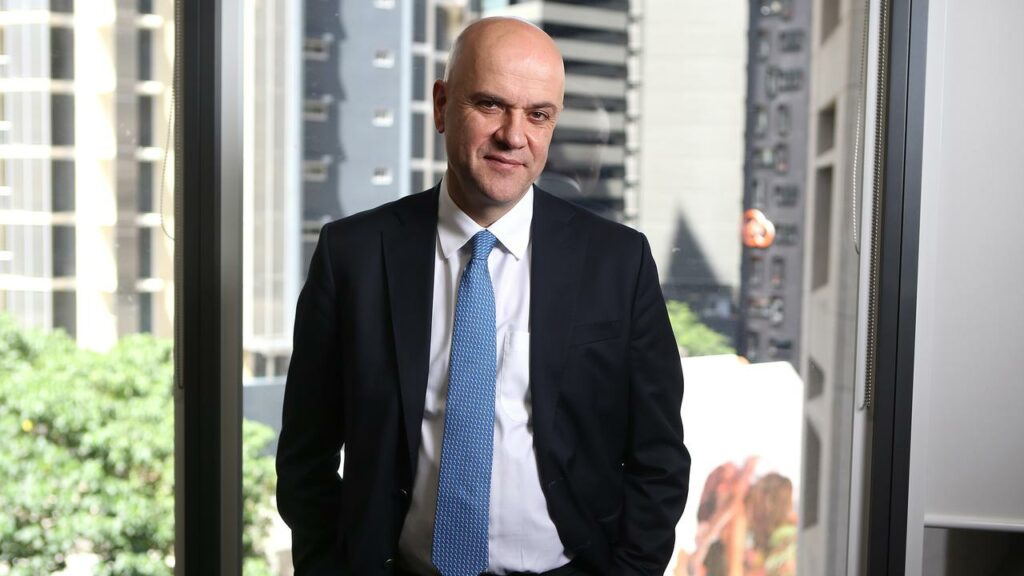Qld health chief upbeat but mandate wary
Marty Silk |

Queensland’s health chief is “personally reluctant” to repeal a venue vaccine mandate before the end of winter and says it could in fact be the very last pandemic restriction ditched.
The state’s Omicron outbreak peaked on January 25 with 928 patients in hospital and 71 in intensive care, well below a predicted 3000-7000 general admissions and an ICU intake of several hundred.
Double-dose vaccine coverage is above 90 per cent and natural immunity high, with at least 343,000 Queenslanders having officially had COVID-19.
Chief Health Officer Dr John Gerrard, who hasn’t knowingly had the virus himself, believes the real number could be as high as 1.7 million.
He says infection and vaccination have created “a substantial wall of immunity”.
But easing remaining restrictions – mandatory indoor face masks, vaccine mandates in venues, and quarantine and isolation – will depend on what happens over the next two months.
Authorities are wary of the virus spreading in schools, which reopened this week, and the onset of winter.
Gerrard admits easing the venue vaccine mandate is a very low priority.
“I don’t think we’re going to change anything with regard to the vaccine mandates before the end of this winter,” he says.
“I just don’t see that at all.”
The indoor face mask mandate and quarantine and isolation measures, the CHO says, are much more likely to be tweaked before the vaccine decree goes.
Gerrard says it’s “very academic” to talk about a horizon on the mask mandate but the situation is fluid with cases continuing to fall.
He’s watching to see if the reproduction number – how many others are infected by one person – falls below one.
A decision on masks would then depend on whether the public would “better accept” a possible temporary repeal or just keeping them on until spring.
“Would we be better off saying, ‘OK, here’s a breather’?” he says.
However easing the vaccine mandate in cafes, restaurants, nightclubs, sports stadiums and theme parks is a low priority.
Gerrard says that mandate, which has been in force for almost two months, is protecting the unvaccinated from crowds.
“I would be reluctant, personally reluctant,” he says.
“The vaccine mandates for people going into clubs and pubs – that would have been, in my mind, one of the last ones because they’re an at-risk population if they haven’t been infected.
“If they haven’t been infected, when they go into pubs and clubs they will get infected.”
Unvaccinated people took up 40 per cent of the state’s intensive care beds during the recent peak, the CHO says. And they probably wouldn’t have needed to go to hospital had they been vaccinated.
The average age of an unvaccinated COVID-19 hospital patient was 20 years younger than those who’d had the jab.
“These young people – young, good people – were just eating up the valuable hospital resources at the peak,” Gerrard says.
“So, of all the measures, (the venue mandate) would be on the lower end of the priority.”
Gerrard noted on Friday that Queensland had kept deaths to 354 and hospitalisations low without the “aggressive measures” of states like South Australia.
It has almost triple the population of SA but recorded fewer than two half times the fatalities.
Queensland’s death rate is also well below the almost 2300 in Victoria and nearly 1700 in NSW
That’s partly because, unlike other states where Delta was predominant, almost all of Queensland’s cases have been Omicron. Secondly, it had high vaccination coverage before opening its borders.
“The only reason why we are not like Italy or New York is because of the vaccination,” Gerrard says.
“If our population was unvaccinated … you would have refrigerated containers in every hospital with bodies in them. I’m quite confident of that.”
Authorities had been bracing for up to 10,000 hospital admissions and several hundred ICU patients.
With only 8000 beds available, there were contingency plans to commandeer those in private hospitals.
But Gerrad says restrictions and vaccinations stopped that happening.
“At the moment, the hospitals are under control and, I think, presumably, going forward, will continue to be under control,” he adds.
The one “dark cloud” for Queensland, he says, has been the high rate of deaths among the elderly who haven’t had a booster.
Authorities are still trying to work out why people over 70 haven’t had a third jab.
Over the longer term it’s difficult to predict the pandemic’s impact on the health system, particularly from “long-COVID”.
Gerrard says he never dealt with a case of “long-COVID” when he was Gold Coast Health’s director of infectious diseases and immunology.
Virus patients who suffer lung damage and are chronically breathless afterwards, don’t actually have that condition, he says. They have long-term damage from COVID-19.
But the picture is less clear for those with chronic fatigue-like syndrome following recovery.
“The issue of longer term COVID after six months is still a grey area,” Gerrard says.
Most recover from the virus without long-term damage.
Gerrard earlier in the week described himself as “a glass half-full kind of person” and said he was optimistic that growing immunity could eventually render COVID-19 as mild as the four existing human coronaviruses.
A theory that one of those mild viruses was introduced as recently as the 19th century, he said, was encouraging.
“The aim is to have this as just one more of those coronaviruses which cause a cold, a respiratory infection, and one would like to think that is where we are going.”
AAP


